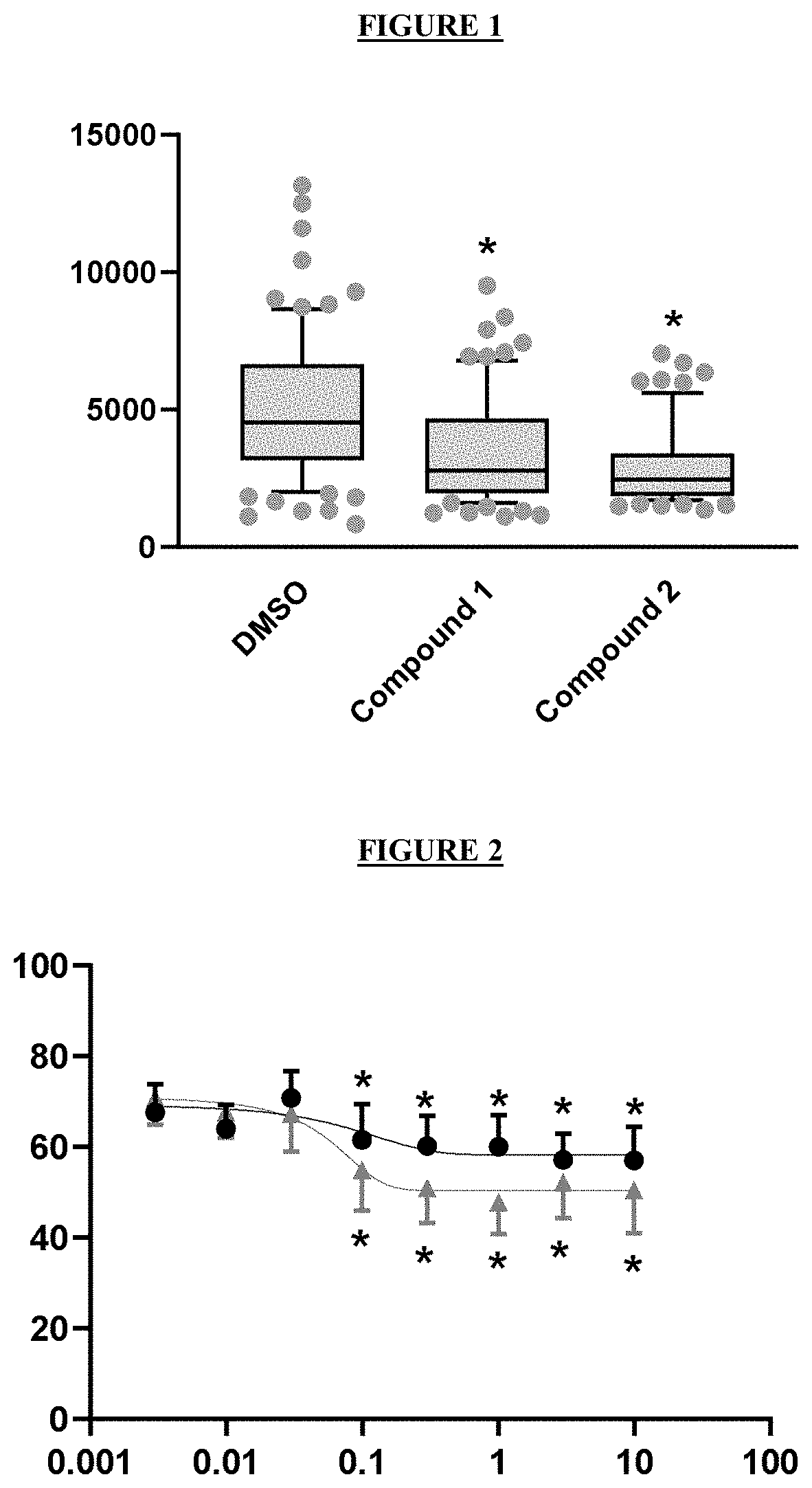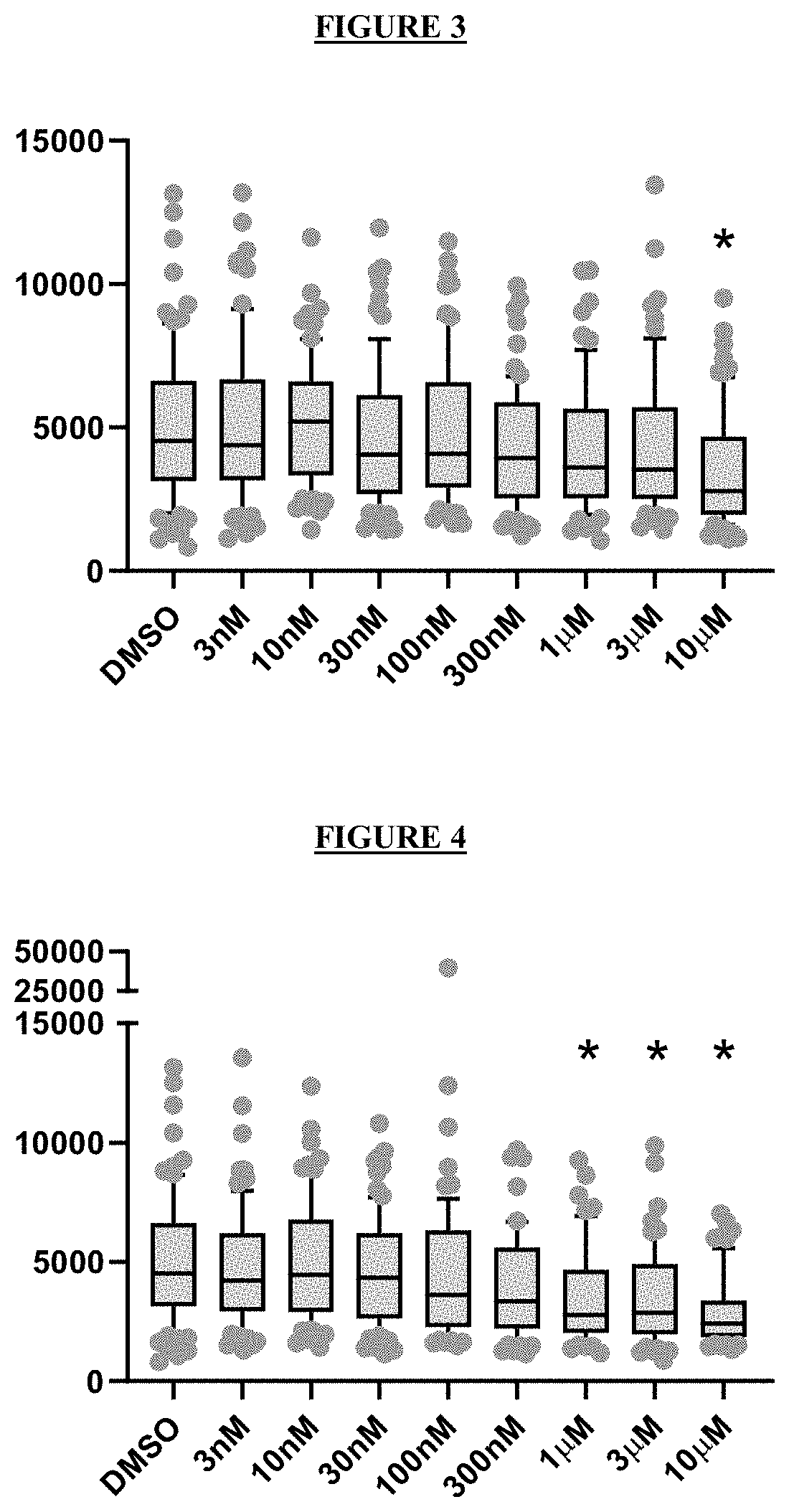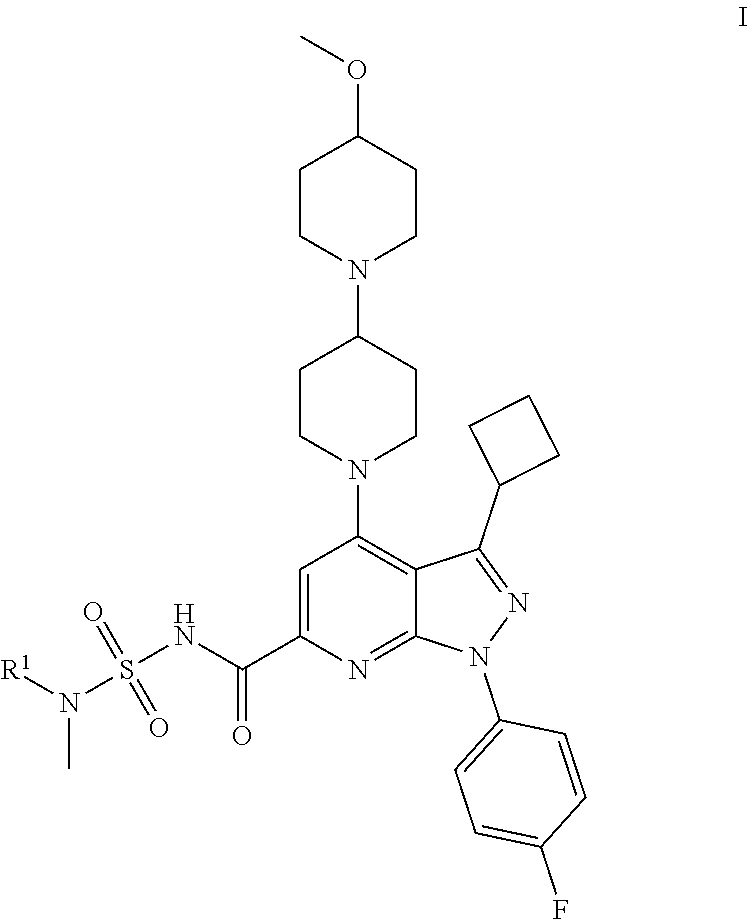Novel compounds and pharmaceutical compositions thereof for the treatment of kidney diseases
a technology of compound and compound, which is applied in the direction of drug compositions, heterocyclic compound active ingredients, organic chemistry, etc., can solve the problems of kidney stones, pain, increased blood pressure and finally death, cyst breakage,
- Summary
- Abstract
- Description
- Claims
- Application Information
AI Technical Summary
Benefits of technology
Problems solved by technology
Method used
Image
Examples
example 1
ive Synthesis
[0102]
1.1. Step i: Cyclobutyl-3-oxo-propionitrile
[0103]A 1 L 4 neck round bottom flask was equipped with 2 dropping funnels and a septum on top of the apparatus. The whole system was flame-dried (heat gun) for 10 min under vacuum and then cooled down to RT under a positive stream of nitrogen (balloon). A low-temperature thermometer was adapted under a positive stream of nitrogen, then a 1 N LiHMDS solution in THF (468.0 mL, 468.0 mmol, 1.5 equiv) was cannulated into the flask using a positive stream of nitrogen. The solution was cooled down to −78° C. (dry ice / acetone cooling bath) as confirmed with the thermometer. Dry MeCN (24.4 mL, 468.0 mmol, 1.5 equiv) was added via syringe into the first dropping funnel, and then added dropwise (over 20 min) into the reaction mixture. After the end of the addition, the mixture was stirred at −78° C. for 1 h. At this point, cyclobutanecarboxylic acid ethyl ester (CAS #14924-53-9, 43.1 mL, 312.1 mmol, 1.0 equiv) as a solution in dry...
example 2
Assays
[0115]2.1. Yellow Fluorescent Protein (YFP) Halide Assay in Wild Type CFTR
[0116]2.1.1. Assay Principle
[0117]To evaluate the ability of a test compound to inhibit wild type CFTR, a YFP halide assay using HEK293 cells transfected with wild type human CFTR was developed. (Galietta, Jayaraman, and Verkman 2001) Cells were incubated during 24 h with a dose range of test compound and the resulting wild type CFTR activity was plotted to obtain the EC50.
[0118]Test compounds were also added together with forskolin to wild type CFTR expressing cells in order to fully active the available CFTR at the plasma membrane and determine accurately the inhibition of the channel activity.
[0119]2.1.2. Protocol
[0120]HEK293 cells were transfected with 10 to 80 ng of wild type CFTR and 20 ng of plasmid encoding YFP (H148Q / I152L / F47L) using jetPEI (Polyplus transfection). Directly after transfection, cells were seeded in black 96-well plates coated with Poly-D-lysine at a density of 70,000 cells per w...
example 3
y
[0124]3.1. Assay Principle
[0125]The TECC assay is used to evaluate compounds on normal primary bronchial epithelial cells (HBE cells), which are closer to physiological conditions
[0126]3.2. Human Bronchial Epithelial (HBE) Cell Culture
[0127]Bronchial epithelial cells isolated from transplanted lungs from normal (wt CFTR) were isolated from lungs obtained from donors undergoing a planned transplantation. These primary cells were cultured directly on type IV collagen-coated polycarbonate Transwell supports with a diameter of 6.5 mm and pore size of 0.4 μm (Costar, #3397) for 18 to 25 days in air liquid (ali) interface essentially as previously described for TECC. (Fulcher et al. 2005)
[0128]3.3. Protocol
[0129]Trans-epithelial clamp circuit (TECC) recordings were performed using the TECC instrument developed and sold by EP Design (Bertem, Belgium). During the recording, the epithelial cells were bathed in a NaCl-Ringer solution (120 mM NaCl, 20 mM HEPES, 1.2 mM CaCl2), 1.2 mM MgCl2, 0....
PUM
| Property | Measurement | Unit |
|---|---|---|
| total volume | aaaaa | aaaaa |
| concentration | aaaaa | aaaaa |
| temperature | aaaaa | aaaaa |
Abstract
Description
Claims
Application Information
 Login to View More
Login to View More - R&D
- Intellectual Property
- Life Sciences
- Materials
- Tech Scout
- Unparalleled Data Quality
- Higher Quality Content
- 60% Fewer Hallucinations
Browse by: Latest US Patents, China's latest patents, Technical Efficacy Thesaurus, Application Domain, Technology Topic, Popular Technical Reports.
© 2025 PatSnap. All rights reserved.Legal|Privacy policy|Modern Slavery Act Transparency Statement|Sitemap|About US| Contact US: help@patsnap.com



